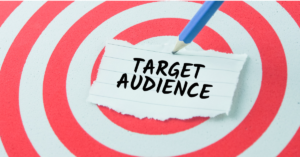Brands are more than a logo, imagery, design, or layout. Your brand is your customer’s perception of your business and their emotional connection with your organization. To determine your brand’s identity is to understand your customer’s experience or emotional connection – to see your business from your customer’s advantage point, or at least, how you want customers to view your business.

Building a brand takes time, research, and an astute understanding of your target market. It takes more than mere observation, it is a strategic plan that requires asking the right questions to gain an understanding of demographics, income, family size, occupation, and more.
Establishing a solid brand demonstrates market protection by cultivating relationships and solidifying how the public sees your business and learns to trust your customer experience. A good brand adds value to the lives of an organization’s customers and creates positive experiences. It is that value that builds brand loyalty. Strategic branding and customer loyalty are solid components of a winning business.
“It is essential to evaluate who is your target customer.”

To grasp what is necessary to construct a strategic branding plan, it is essential to evaluate who is your target customer. A target customer is simply the people you think will purchase your products or services, and it is the group of people you have identified who can benefit from your services and who you can solve one of their problems. The problem may range from making their lives easier; to fulfilling needs, wants, or desires. The focus must always remain on your target audience.

When thinking about your brand, ask questions such as, “who am I trying to sell my product or service to, or whose problem am I solving (Get to know as much as possible about your customer base)? By answering these questions, you help build a strong brand and the brand’s voice. This information becomes the foundation for all your marketing communications and branding efforts.
Defining your target audience provides a good foundation for maximizing a customer’s lifetime value, but we will address that shortly. Understanding your targeted audience provides the information to effectively communicate to your customer base, fortify a strong connection, and build brand loyalty.
Suppose an organization has invested the time and resources to create a consumer experience that transfers into a strong emotional connection. In that case, the organization has a higher opportunity to create consumer loyalty. They have designed a brand that entices consumers to come back and build a favorable experience.
This strategic approach, in turn, makes it easy for consumers to say “no” to a new brand and stick with the one brand they know and trust. In retaining those customers, you increase the customer’s lifetime value by convincing them not to look elsewhere.
So, if you worry that you have missed the mark, you need to ask yourself who your target market is and examine your customers’ emotional responses when they think of your company.

When examining the emotional responses, look at items such as:
- Are they finding consistency in the services you are providing?
- Are the products and services sold the ones my target customers need?
- Is the customer experience the same each time or exceed expectations?
A pleasurable experience promotes a psychological connection without the customer being aware. Consistency is critical; customers may notice if even the smallest detail is off. If the experience standard slips, customers may reevaluate why they return to the business.
“A good brand protects a business and limits competitor market expansion.”
A good brand protects a business and limits competitor market expansion. Think about it, if you are going to open a new business in a category dominated by another local or regional business, you may think twice before opening your doors. One reason is that any new or current product or business attempting to enter the market will need to overcome local biases about superiority or customer loyalty.
Strong brand identity means the entering organization will need to increase its marketing and advertising spending to change opinions. Taking time, in the beginning, to understand your customer base will be of great value as your business matures and grows. As the company grows, don’t forgo the extra effort to study and know your target market because their needs will change.
Both the imagery and experience are essential, but strong imagery cannot make up for a poor customer experience.’

Branding, customer experience, and brand loyalty are among the main reasons companies spend large amounts of money on focus groups, marketing surveys, and research. The logo, imagery, and atmosphere connect us to experiences. Yes, these elements are critical in building a brand, but they can also serve as a reminder and unwarily identify our opinions about a business.
When we see business imagery, the imagery is the optical connection that invokes our emotional response. Both the imagery and experience are essential, but strong imagery cannot make up for a poor customer experience. Therefore, if you want to ensure your organization’s brand will have longevity, focusing on user experience helps the business mature and find stability.
If you strive to build a strong business with a brand that keeps customers returning, focus on your consistency and the customer experience first.


